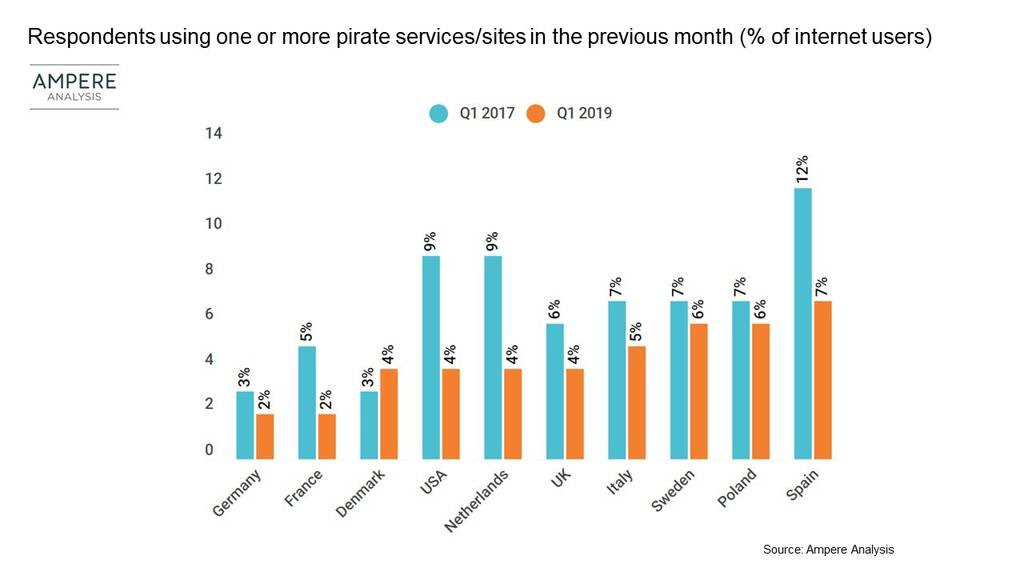Video Piracy Sinks Below 5% in U.S., Per Ampere
LONDON—A pirate life no more for online video consumers? The trend seems to be heading in that direction according to a new study from Ampere Analysis. In a three-year period from Q1 2016 to Q1 2019, the number of consumers who say they regularly use pirate sites and services to watch online video have decreased, in large part due to the rise of legal SVoD services.
“On average, in markets where either catch-up or SVoD online video viewing has risen the most, piracy has experienced the biggest drop,” said Richard Broughton, director at Ampere. “With the growth in all-you-can-eat legal services, users no longer need to turn to illegitimate sources to get their viewing fix.”

In the U.S., Ampere identified a five point drop in the number of respondents using pirate services from Q1 2017 to Q1 2019 (9% to 4%). Similar size drops occurred in the Netherlands, France and Spain, which in 2017 had the largest percentage of piracy at 12%.
Ampere does issue a few words of caution, however. First, the mere presence of legal SVoD services isn’t enough to decrease piracy, consumers must actually use the services to have an impact. And second, what services content is available on could be a key factor in a resurgence of pirate services.
“The on-demand market is moving into a period of ‘siloization’ where producer and distributor brands go direct to the consumer, at the same time restricting the amount of content they license to third-party services,” said Broughton. “If the mainstream OTT players have less of the content users want to watch, when they want to watch it, there’s a genuine risk that usage of these SVoD and catch-up services could begin to slump, something that pirate operators will be quick to capitalize on.”
The professional video industry's #1 source for news, trends and product and tech information. Sign up below.
